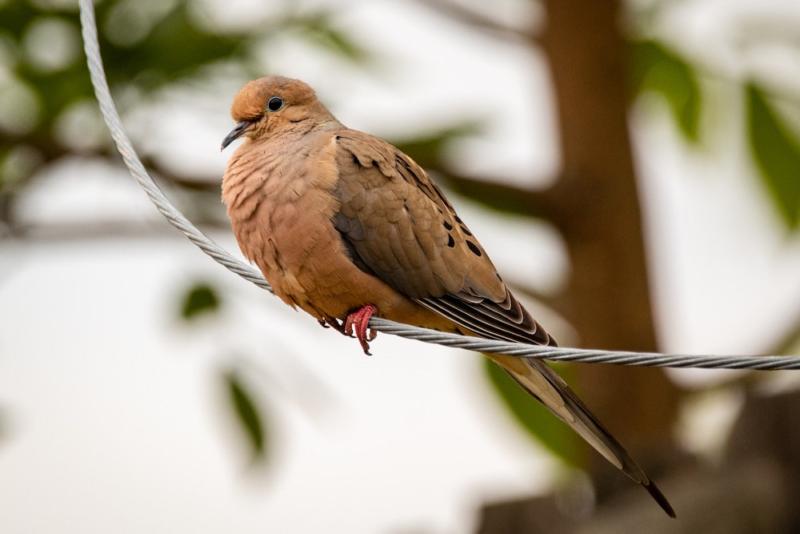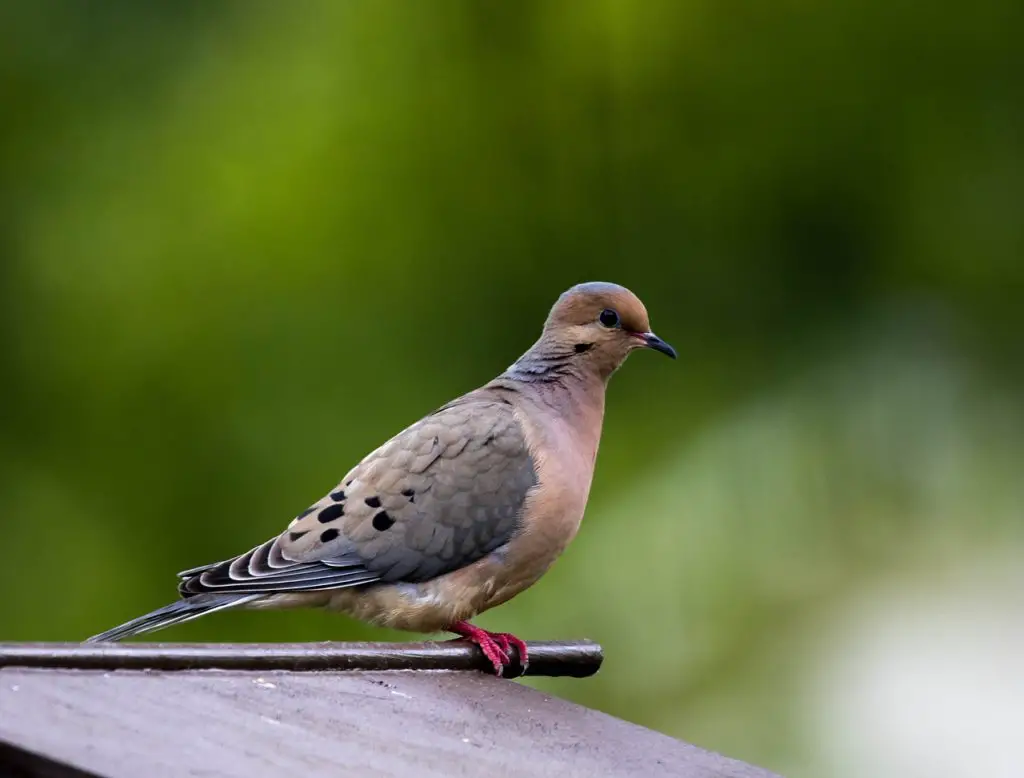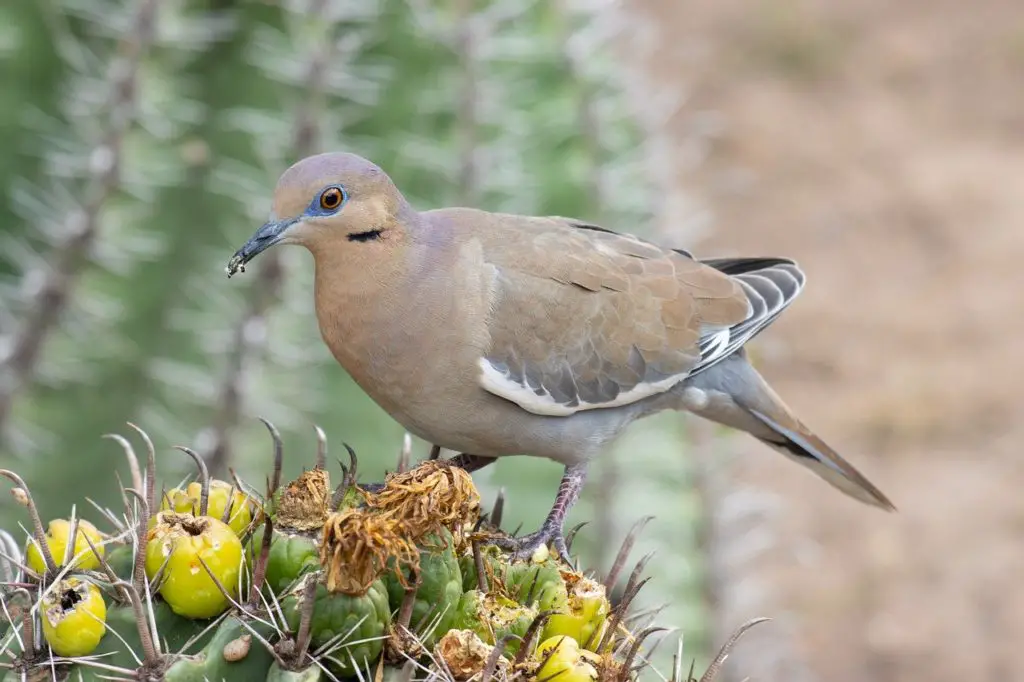Doves can be found in a wide array of places. From open savanna and grassland to mountain forests and scrub, they are adaptable creatures.
Doves usually sleep in a tree where they can be safe from predators. They may also sleep on the ground if they can find a sheltered spot.
Urban and rural environments are both suitable habitats. Agricultural areas, coastal dunes, and mudflats can also be home to these birds.
Let us take a peek at the dwellings of these doves and what their natural habitat looks like!
Natural Habitats
Doves are everywhere. They live in forests, plains, cities, and farms.
In nature, they build nests in trees or shrubs. They like places with lots of leaves and dense vegetation. They also make nests in tree holes and old nests – especially when it’s cold.
.jpg)
In places with humans, they like parks, gardens, cemeteries, and wetlands. Some even live near oil wells, where food is abundant.
Human-Made Homes
Doves are a beloved symbol of love, peace, and freedom. But in the wild, they prefer special types of trees or areas. Amazingly, some doves can survive in urban environments.
They may take advantage of human-made structures, like air conditioners, light fixtures, power lines, or telephone poles. Plus, they build nests in large shrubs.
The nests are small and hidden. They are made of twigs, branches, and soft material like grasses and feathers – giving us a symbol of hope and freedom.
Doves’ Sleeping Habits
Doves require a secure spot with enough heat and coverage for sleeping. As a rule, doves sleep on twigs, shrubs, or trees. Generally, they sleep alone or in couples, though some species can sleep in small groups.
Let’s take a deeper look at dove slumber behavior:
- Doves sleep on twigs, shrubs, or trees.
- They usually sleep alone or in couples, though some species can sleep in small groups.
Time of Day
Doves are birds that are active during the day. In the evening, they conserve their energy and sleep at night. Usually, they are seen in pairs. But, some types of doves live in flocks.
When it comes to resting, doves use a variety of surfaces. These can be tree branches, rocks, or rooftops. They also hide in trees and shrubs, or ledges, rafters, and chimneys when they feel threatened.
Doves enter a light sleep at dusk, called roosting. During this time, they tuck their heads under their wings and remain alert. Also, they can stay upright and alert to look out for potential danger.
After midnight, they enter a deeper sleep with their heads tucked underneath one wing. They wake up shortly before dawn. Once awake, they perch on branches or rooftops to watch out for threats.
Location
Doves often sleep near each other and in their own nests. They may even roost in a communal roost with thousands of birds in one tree or area. During winter, some doves migrate south to warmer climates, while others stay in their habitats.

Doves typically take daytime naps instead of nighttime sleep, as they can become alert quickly when necessary. They sleep unihemispherically, with only half of their brains at rest, in order to be aware of any danger.
Where do doves sleep at night?
Doves are beloved worldwide! They have some unique habits, like where they sleep at night. They may rest in trees, shrubs, and even on the ground. Let’s explore the typical spots where doves sleep:
- Trees
- Shrubs
- Ground
It is often easy to see where doves have spent their nights due to their droppings on the ground.
Especially mourning doves poop a lot and will leave a mess under their habitual roosting spots!
Trees
Doves are social birds who sleep together in flocks. They prefer roosting in high places like trees, so they can spot potential predators. During the night, both males and females make cooing noises to keep connected.
When looking for a place to sleep, doves usually stay away from open areas such as grasslands. Instead, they like trees for security.
In bigger flocks, you may find several birds on one branch in colder weather. This helps them preserve heat, since they remain warmer when huddling close together.
Roofs
On a warm summer night, a roof can be the perfect place to sleep and gaze at a glittering canopy of stars! Safety should be your number one priority though.

Make sure that the roof is in good condition, free from damage. Additionally, roofs can become scorching hot during the day and retain that heat- so stay away from any electric or wiring hazards.
Consider the weather- strong winds or rain can spell disaster for an outdoor sleeper. Make yourself visible with some flashlights, or solar-powered lights, so everyone stays safe. Now you can enjoy sleeping under the stars!
Porches
Doves love to sleep in porches! They provide safety and protection from strong winds, predators, and the moon’s light. Doves may hide under roof edges, in rock crevices, or even on your porch railings.
If these spots are already there, you can make them better with natural nesting materials like twigs and leaves. House plants on your porch can also make doves feel safe and welcome.
Especially in the winter, when food is scarce, they can use your porch as a warm and safe place to sleep during the cold winter nights!
Do doves coo at night?
Yes, doves can coo at night.
Doves will coo at night for several reasons, including to catch the attention of their mate or a prospective mate, communicate with each other in the nest, warn other doves of predators, or call to nest.
Mourning doves, in particular, are known to coo at night to attract a mate or communicate with their mate.
While it is considered usual for doves to coo at night, it is also possible for a dove to coo at night if it is in danger, such as when startled by a predator or sudden movement.
Common Sleeping Positions
Let’s learn about the sleeping positions of doves and how they stay safe:
Doves have soft feathers and are tiny birds. They sleep in various positions. To rest, they often tuck their head under a wing. Additionally, they nestle up with their flock mates.
Doves, like most birds, have a unique way of sleeping. They do not sleep in the same way that humans do. Instead, they sleep with their heads tucked under their wings, standing on one leg, and balancing on a perch or a branch. This sleeping position helps them to conserve energy and stay safe from predators.
Doves are diurnal birds, which means that they are active during the day and rest at night. When it’s time to sleep, doves will look for a safe and secure location where they can perch or roost. They will choose a branch or a perch that is high up and away from the ground, where they are less likely to be attacked by predators.
Once they have found a suitable spot, they will tuck their head under their wing, and stand on one leg.
This sleeping position is not only comfortable for them but also helps to conserve body heat. By tucking their head under their wing, they also protect their head and neck from the cold.
While doves are sleeping, they remain alert to their surroundings. Their eyes are closed, but they can quickly sense any movement or disturbance nearby.
If they sense any danger, they will quickly wake up and fly away to safety.

To further protect themselves from predators, doves also sleep in flocks. This safety in numbers strategy helps them to keep an eye on each other, and they can alert the rest of the group if they sense any danger.
In summary, doves sleep by tucking their heads under their wings, standing on one leg, and balancing on a perch or a branch. This sleeping position helps them conserve energy and stay warm. By sleeping in flocks and staying alert to their surroundings, they can also stay safe from predators.
Human Interference
The safety of doves is threatened by human activity. To protect them, noise and other disturbances must be reduced, pesticides and herbicides avoided, window collisions minimized, domestic cats kept away, and lighting disorientation kept in mind. It may cause mortality when the birds become exhausted or confused during migration.
Doves rely on a variety of habitats for food and shelter. In spring, some species nest in wooded areas; others feed in fields or meadows. At night, they roost in bushes, trees or shrubbery, as long as they feel safe from predators.
Conclusion
In conclusion, doves are adaptable creatures that can be found in a wide range of environments, from forests to cities, and they have specific preferences when it comes to sleeping spots.
They typically sleep on twigs, shrubs, or trees, either alone or in couples, and they stay alert to any potential danger. During the night, doves may coo to attract a mate or communicate with each other. While they prefer trees for security, they may also sleep on the ground or on human-made structures like roofs and porches.
Overall, doves have some unique habits that make them a beloved symbol of love, peace, and freedom.




